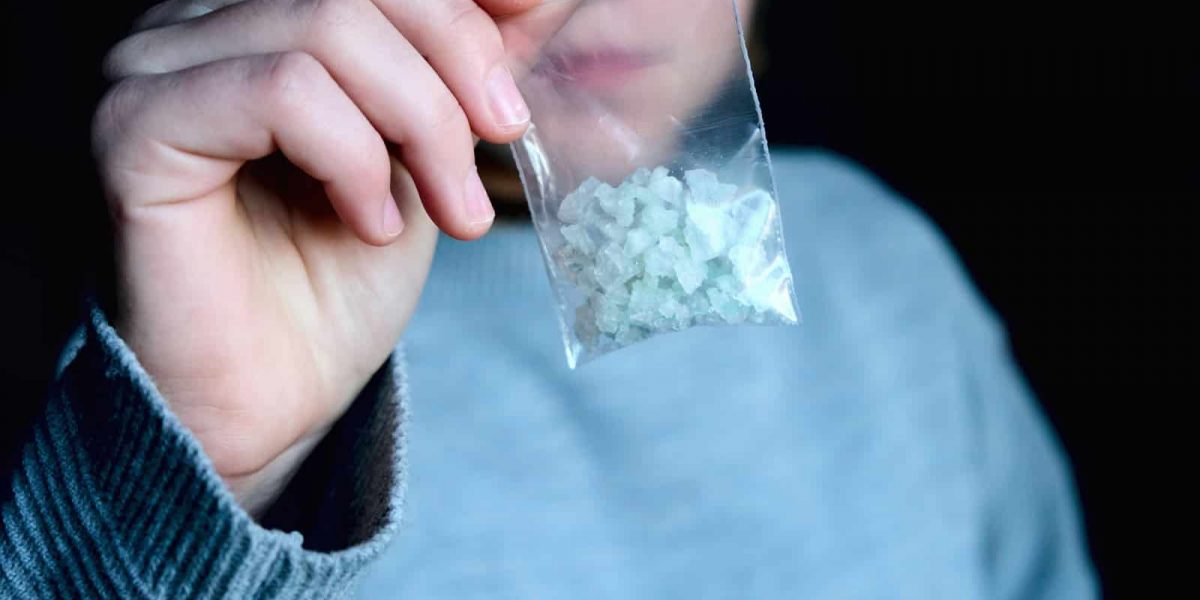Begin Your Journey
The help you need is just a step away. Contact us today to learn more about our treatment options.
Symptoms of a meth overdose include a rapid heart rate, high blood pressure, and high body temperature. These symptoms can cause serious health emergencies such as a heart attack, stroke, or seizure. If you suspect someone is experiencing a meth overdose, call 911 immediately; without emergency medical attention, there is a high risk of death.
Methamphetamine is a strong, highly addictive stimulant that affects the central nervous system.[1] It is a white crystal-like powder that is odorless but bitter-tasting. It can easily be dissolved in liquids, including alcohol. It can be smoked, snorted, taken orally, or injected. Illegal methamphetamine is also known as meth, crystal meth, crank, speed, glass, teak, chalk, Tina, and ice. [2]
Methamphetamine and amphetamine are chemically similar, but methamphetamine was not derived from amphetamine specifically for use in nasal decongestants or bronchial inhalers. Both drugs are central nervous system stimulants; however, methamphetamine has a stronger and longer-lasting stimulant effect compared to amphetamine. Methamphetamine is a much stronger stimulant than amphetamine. This means that methamphetamine has a higher potency and longer duration of action in the brain, leading to potentially more severe effects on the central nervous system compared to amphetamine.[3]
Meth can have some serious side effects that require immediate medical attention. These dangerous side effects are also considered meth overdose symptoms. They include [6]
Amanda Stevens is a highly respected figure in the field of medical content writing, with a specific focus on eating disorders and addiction treatment. Amanda earned a Bachelor of Science degree in Social Work from Purdue University, graduating Magna Cum Laude, which serves as a strong educational foundation for her contributions.
Read moreThe help you need is just a step away. Contact us today to learn more about our treatment options.

If you believe someone has overdosed on meth, they require medical attention immediately. A meth overdose can be life-threatening. Call 911
While you are waiting for emergency medical help:

Emergency room healthcare providers will monitor the person’s heart rate, breathing rate, blood pressure, and temperature and treat their symptoms as required. Common treatments include [10]
How well a person can recover from a meth overdose depends on the amount they used and how quickly they were able to receive medical care. The quicker a person overdosing receives medical care, the greater their chances of recovery are.
A person can experience psychosis and paranoia for up to a year after an overdose or using methamphetamine, even with receiving rapid medical attention.[11] Some effects can be permanent, such as memory loss, sleeping problems, skin damage, and tooth loss. The person may also experience long-term disability if they had a heart attack or stroke. One’s kidneys can also be damaged so badly that they have kidney failure and require dialysis.
It is estimated that 32,537 people died from an overdose that involved methamphetamine in 2021.[12]
Long-term methamphetamine use can lead to significant psychological problems, such as[13]
Long-term meth use can lead to physical problems such as
Methamphetamine, under the brand name Desoxyn, is indeed prescribed to treat attention deficit hyperactivity disorder (ADHD). While it is prescribed infrequently compared to other ADHD medications due to its high potential for abuse, it remains a viable option in specific cases where other treatments have failed. If it is prescribed as an ADHD treatment, it is at much lower levels than the levels people use recreationally.
Smoking and injecting meth get the drug into a person’s bloodstream very quickly, giving them a “rush.” This rush is extremely pleasurable but only lasts for a few minutes. Snorting meth takes 2-3 minutes to feel the results, and taking it orally takes 20-30 minutes. Both snorting and orally ingesting meth result in a sense of euphoria but not the rush that smoking or injecting gives.
Methamphetamine’s pleasurable effects begin to wane before the blood concentration of the drug falls. The person then takes more of the drug to maintain the high, and the blood concentration of the drug continues to climb. This is where the risk of overdose grows. This binge and crash pattern can lead to a person going on a “run,” meaning they stop eating and sleeping for days in an attempt to keep the high and avoid the crash. [14]
Overamping is a term used for overdosing on a stimulant. It is frequently caused by [15]
In most states, Good Samaritan Laws provide legal protection for individuals who seek emergency help during an overdose, shielding them from prosecution for minor drug offenses. This is designed to encourage bystanders to report overdoses without fear of legal repercussions. [16] The goal of the Good Samaritan Law is to protect people who call for medical help during a drug overdose and prevent drug overdoses.
The Naloxone Access Law protects people who administer naloxone during an opioid overdose. Forty-seven states and Washington, D.C., have Good Samaritan and Naloxone Access laws. Kansas, Texas, and Wyoming do not have Good Samaritan laws but do have Naloxone Access laws.
There is a pattern of lower rates of opioid-related overdose deaths in states that have Good Samaritan laws when compared to the state’s overdose death rate before enacting the law and when compared to states that do not have Good Samaritan laws. People are more likely to call 911 when they know the law. Unfortunately, many are unaware of the law among law enforcement and community members, which could impact a person’s willingness to call 911.
© 2025 SOBA New Jersey. All Rights Reserved.
SEO by DIGITECH
If you are ready to take the first step toward a new life free from substances, we are here to answer any questions and help you begin your recovery journey.
© All Rights Reserved 2025. Soba New Jersey. SEO by DIGITECH .
(888) 229-7989